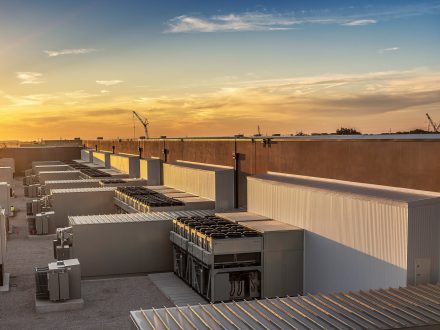Vertiv and Compass Datacenters Introduce Liquid and Air Cooling System

Vertiv CoolPhase Flex integrates both functions in the same system to support artificial intelligence deployments.
Vertiv and Compass Datacenters team up to introduce a data centre cooling solution that facilitates artificial intelligence (AI) deployments.
Vertiv CoolPhase Flex, as the latest generation of the Vertiv Liebert DSE Packaged System, integrates liquid and air cooling functions into a single system to support high-density computing. It promises efficiency, easy deployment, cost and space savings.
Vertiv has taken on the development and manufacturing of this solution. The first units will be deployed in Compass facilities in the first quarter of 2025. This is part of a multi-year procurement agreement.
‘AI is not only changing data centres, but also the way in which industry players collaborate to facilitate growth,’ says Gio Albertazzi, CEO of Vertiv. ‘Datacentre operators, customers, chip manufacturers, infrastructure providers and utilities, among others, must work closely together to innovate and reduce the barriers to AI adoption.’
‘Compass Datacenters and Vertiv engineers worked together to make this important project a reality. The Vertiv CoolPhase Flex,’ he explains, ’makes it possible to support today’s IT and facilitate the data centre of the future.’
Chris Crosby, CEO of Compass, also weighed in. ‘Our customers are looking for fast, practical and energy-efficient ways to introduce liquid cooling to support AI and other high-density applications, but want the flexibility to leverage air cooling and support mixed loads in the same facility,’ he says.
‘We had a vision of a future where we could be ready to rapidly deploy liquid or air cooling to meet changing customer needs and Vertiv has realised this vision in a very innovative way,’ he continues.
‘The Vertiv CoolPhase Flex offers a level of flexibility that is unparalleled in the market and extremely valuable,’ says Crosby. ‘A predictive tool that allows us to know in advance when equipment needs maintenance rather than waiting for a potential problem with availability has been a game-changer for cooling equipment.